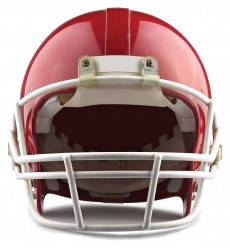Walk This Way

In the video below, seemingly simple stick-figure animations illustrate the dramatic effect that a concussion can have on the ability to control balance while walking. They were developed by the University of Oregon Motion Analysis Laboratory.
Two high school students—one, a victim of a concussion and the other, a healthy control subject—were fitted with reflective markers that are picked up by cameras that emit near-infrared light. The cameras send information to a computer that generates a three-dimensional model of the subject’s motion.
The first student—the control—walks at a decent speed, without much difficulty or side-to-side sway.
The second student—who was involved in a helmet-to-helmet collision at a football practice two days earlier—walks at a slower speed and demonstrates poor side-to-side control and a lack of symmetry to his movement.
“The subject clearly cannot walk in a straight line,” said David Howell, a Ph.D. candidate in the Department of Human Physiology. “The frightening part is that any physical activity requires you to move; so if you have to run, this balance deficit may increase following a concussion. Further, when a subject is required to complete a task at the same time, our data has revealed an increase to this disturbance to an even greater degree.”
Testing has shown that even two months after the injury, adolescent concussed subjects experience “subtle yet persistent disturbances” in their ability to walk while completing cognitive tasks, Howell said.
For more information on the study, read the Cascade story.
— Matt Cooper


 Twitter
Twitter Facebook
Facebook Forward
Forward